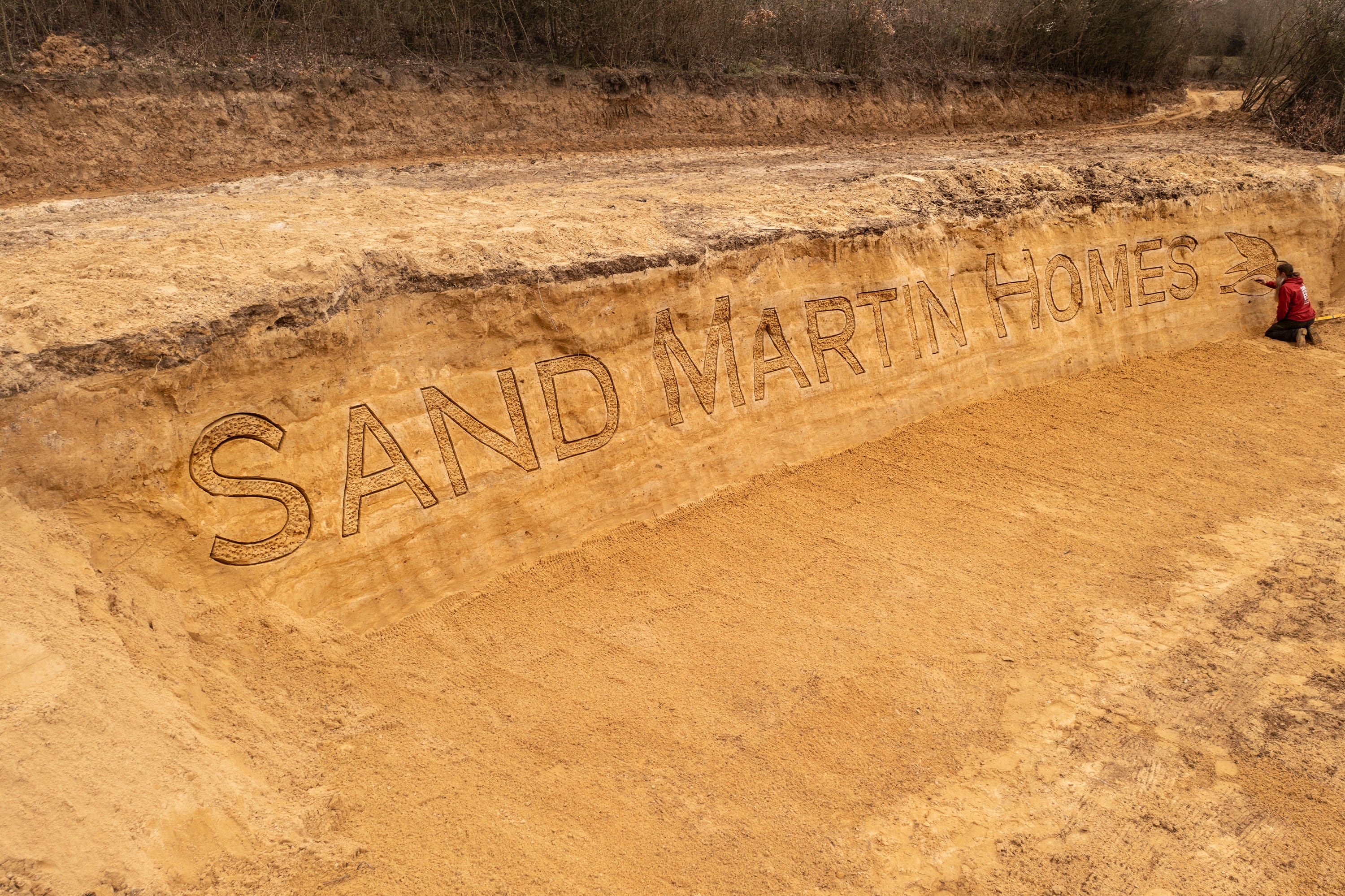Giant ‘sandcastle’ built as home for returning sand martins
Conservationists reach for their buckets and spades in a bid to encourage hundreds of the migratory birds to make their homes at Spynes Mere, Andy Gregory reports


It is hoped that hundreds of sand martins could soon nest at a Surrey nature reserve for the first time in 25 years, after conservationists created a vast 400-ton “sandcastle” to entice them.
The tiny birds typically visit the wetlands in Nutfield Marshes between March and September, after migrating thousands of miles from sub-Saharan Africa.
But the summer visitors have not nested there for a quarter of a century, and conservationists warn that their natural inland nesting sites in the UK have decreased in recent years.
Now the Surrey Wildlife Trust hopes their 20-metre-long sand structure, made with the help of a “giant bucket mould”, will prove a popular place – and a safer one than the active quarry sites that sand martins tend to favour – for hundreds of the birds to nest and raise their young each year.
Sand martins use their miniature claws to dig burrows into the sand, reaching 50-90cm in length, and typically make a small chamber at the end to lay their eggs.
Read more:
Being social creatures, it is hoped that the giant sandbank – which is five metres deep and 1.8 metres tall – will enable them to roost together, with a curved vertical face enabling them to peep out of their nest holes to find mates.
“Sand martin numbers have plummeted twice in the last 50 years as a result of droughts in their wintering grounds in Africa,” said James Herd, project manager at Surrey Wildlife Trust.
“In the UK, the natural nesting inland habitat along river banks has decreased as rivers pass through more urbanised areas and under roads, and quarrying has ceased.
“So creating this nest bank is important to protect them against the boom-and-bust nature of their nesting sites and give more security for the population to expand.”
The installation at Spynes Mere – a Nutfield Marshes wetlands reserve, originally created from a restored sand extraction site – was built with the help of professional sand sculptors who used a “giant bucket mould” made from wooden boards, as well as using diggers and dumper trucks.
To create the nest bank, in a method similar to using a bucket and spade on a beach but on a “grand scale”, Surrey Wildlife Trust worked with sand sculptors Sand in Your Eye to build several 1.8-metre test structures in mid-January before starting the main construction in February.
“We have only used sand from the site to create the 20-metre-long by five metres deep and 1.8-metre-high structure from a giant bucket mould made from wooden boards,” said Jamie Wardley, sand sculptor and director of Sand in Your Eye.

“We added water to create the right mix, compacted the sand, and three to four weeks later the boards were removed. The new ‘des res’ is now ready for sand martins to move in, leaving nature and the sand martins to do the work of sculpting hundreds of nesting burrows.”
Site manager Nick Allman said sand martins liked to nest in active extraction sites because of their fresh vertical sand faces, but if nesting birds were found, it forced work to stop. “The sand martin bank is a way of naturally drawing them away from the active sites to where it is safer for them to nest,” he said.
New vertical faces carved out of the natural sandscape, combined with the nest bank, provide 100 sq metres for sand martin homes, as well as a habitat for insects such as solitary wasps and bees, Surrey Wildlife Trust said.
Up to a metre of the sandbanks will be shaved off the face annually to cut down on nest parasites and, after five or six years, sand will be recycled to rebuild the bank so it can provide a lasting home for the birds.
Join our commenting forum
Join thought-provoking conversations, follow other Independent readers and see their replies
0Comments